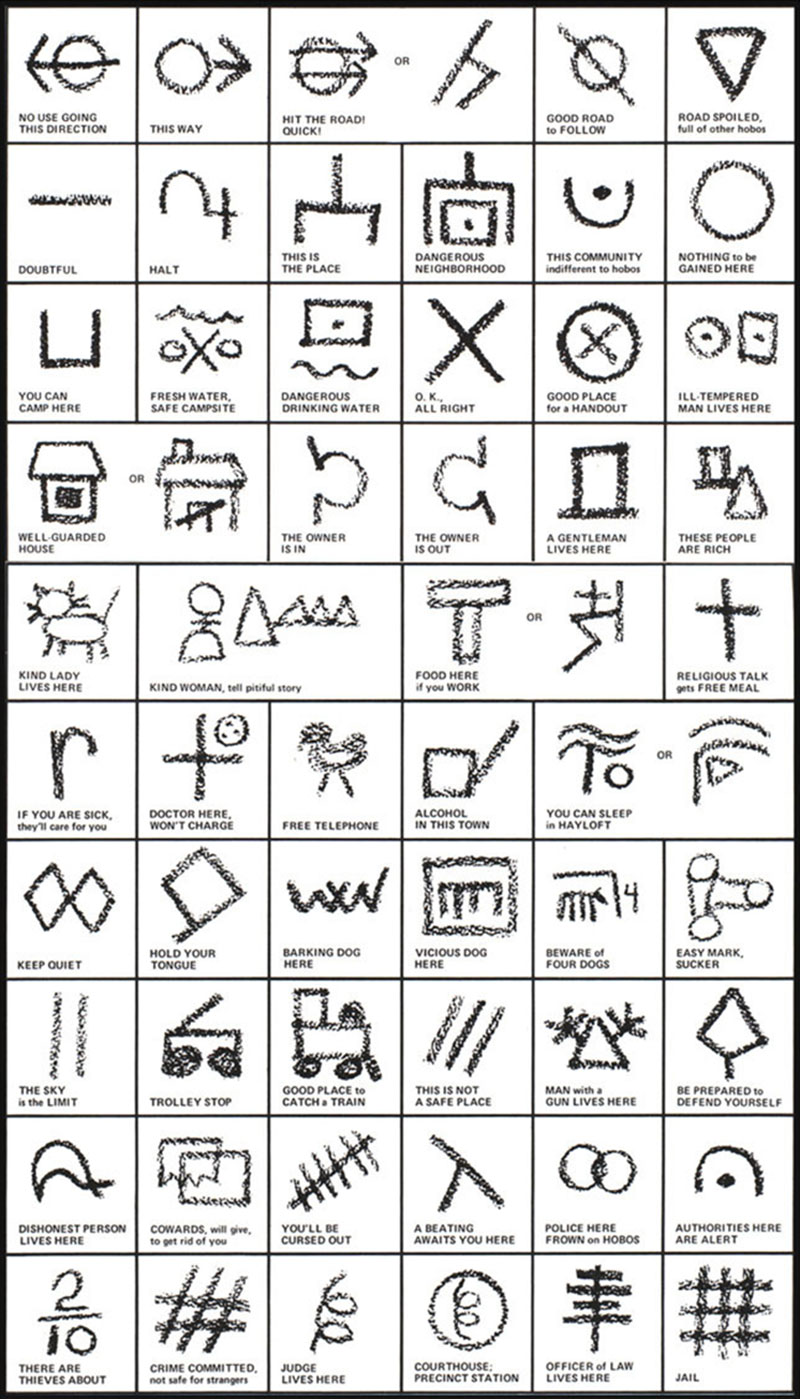Hobos were the nomadic workers who roamed the United States, taking jobs wherever they could, and never spending too long in any one place. The Great Depression (1929–1939) was when numbers were likely at their highest, as it forced an estimated 4,000,000 adults to leave their homes in search of food and lodging. Of those, 250,000 were said to be teenagers — the economic collapse had destroyed everything in their young lives. They criss-crossed the country, usually by freight train, jumping into boxcars as trains pulled away from their stops or slowed at bends in the track.

Finding food was a constant problem, and hobos often begged at farmhouses. If the farmer was generous, the hobo would mark the lane so other hobos would know it was a good place to beg.
Markings would be made on fences, buildings, trees, pavements — anywhere a message could signal help or trouble. In the words of Susan Kare, who designed the original Macintosh icons, “This kind of symbol appeals to me because it had to be really simple, and clear to a group of people who were not going to be studying these for years in academia.”

Translations for some commonly used signs:
- A cross — “angel food” (food served to hobos after a sermon).
- A triangle with hands — the homeowner has a gun.
- A horizontal zigzag — a barking dog.
- A square missing its top line — safe to camp in that spot.
- A top hat and a triangle — wealth.
- A spearhead — a warning to defend yourself.
- A circle with two parallel arrows — get out fast, hobos aren’t welcome.
- Two interlocked circles — handcuffs (i.e., hobos are jailed).
- A caduceus symbol — doctor living in the house.
- A cross with a smiley face in one of the corners — the doctor will treat hobos free of charge.
- A cat — a kind lady lives here.
- A wavy line (signifying water) above an X — fresh water and a campsite.
- Three diagonal lines — not a safe place.
- A square with a slanted roof (signifying a house) with an X through it — the house has already been “burned” or “tricked” by another hobo.
- Two shovels — work available (shovels, because most hobos performed manual labour).


The number of travelling workers fell dramatically by the 1950s, as Jack Kerouac, no stranger to the hobo life, noted in Lonesome Traveler (1960):
“The American Hobo has a hard time hoboing nowadays due to the increase in police surveillance of highways, railroad yards, sea shores, river bottoms, embankments and the thousand-and-one hiding holes of the industrial night.”
One of the most well-known hobo songs is Big Rock Candy Mountain, first recorded by Harry McClintock in 1928, about a hobo’s idea of paradise. It was used in the opening credits of O Brother, Where Art Thou?
Details via livinghistoryfarm.org, SSoIH, angelfire.com, dangerousminds.net, and weburbanist.com, horailroad.com, Wikipedia, Riding the Rails (on YouTube).
Read more:
Source: llogodesignlove.com


Σχόλια
Δημοσίευση σχολίου